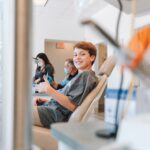Birth – 18 years.
Mindfulness in schools: MYRIAD trial findings offer limited support for school based mindfulness training

Lucinda Powell reports on the findings of the huge MYRIAD (My Resilience in Adolescence) project, which looked at the effectiveness of school based mindfulness training across more than 100 UK schools.
[read the full story...]







